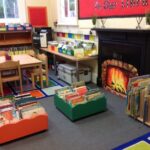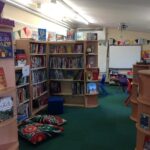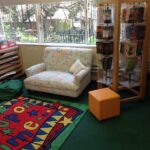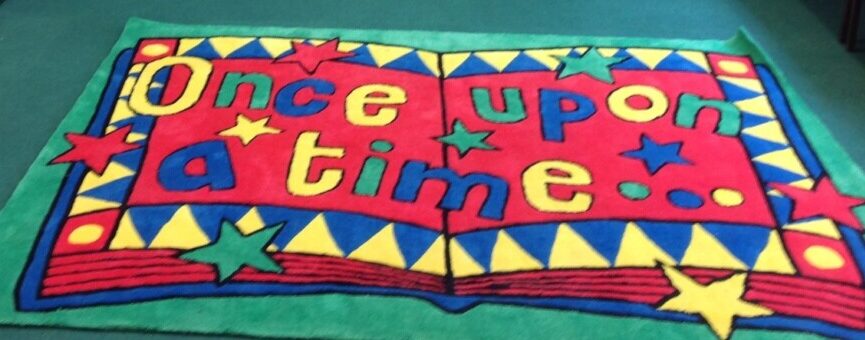
Reading Intent: Our aims and how we plan and structure our reading.
“Reading is a gateway into unfamiliar places, other people and alternative experience.” Mary Myatt
We are a reading school and we value and nurture all aspects of reading.
We recognise that reading is an essential life skill. Children must acquire good reading skills in order to access the information that will support their development in all curriculum areas. We also believe that reading for pleasure can support wellbeing and aid relaxation.
The EYFS Framework states that; “it is crucial for children to develop a life-long love of reading,” and like the programmes of study for reading at Key Stages 1 and 2 states that reading consist of two dimensions:
- Word reading;
- Comprehension (both listening and reading).
Fluency is the bridge between the two areas.
Our teaching focuses on developing pupils’ competence in both dimensions and developing the children’s fluency.
We want our children to:
- develop a love of reading and a desire to read for enjoyment;
- read with confidence, fluency and understanding
- understand a range of text types, media types and genres;
- have a suitable technical vocabulary to respectfully articulate their responses in any discussion.
We aim to foster positive attitudes to reading through carefully designed teaching activities and classroom provision.
For all children our two, newly developed, Library areas in the lower and main building helps to provide a cosy area to share and look at books. It signals to the children the importance and value we place on reading. The children help to develop the displays in the room so they feel that the room belongs to them.
In addition, we have reading materials specific to particular year groups to ensure that our children are exposed to a wide range of traditional and modern literature as they progress through the school.
Reading initiatives have been a feature of the school’s reading for pleasure goals for a number of years and this has included themed days, extreme reading time, book clubs on the Chatterbooks model, pupil librarians, reading challenges, participation in our local library summer reading challenge and of course, World Book Day participation.
How we Plan Reading
EYFS
Our planning uses non-statutory Development Matters guidance to help deliver the EYFS learning requirements. Regular, daily opportunities are planned where books, songs, poems and rhymes are read to and shared with the children. Planning also includes using non-fiction books based around the theme being taught or following the children’s interest to develop the children’s vocabulary and knowledge.
Key Stage 1 and 2
Whole Class: Our English planning follows the HFL (Herts For Learning) scheme of work. This provides a well-structured teaching sequence which leads to quality written outcomes and offers regular opportunities to explore different genres including; fiction, non-fiction and poetry books.
Implementation: How we teach Reading:
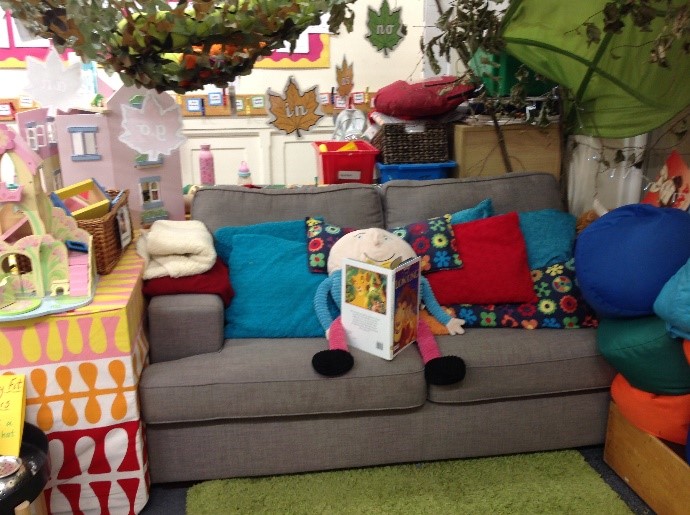 Within the Early Years and on Key Stage 1, at St Andrew’s , early reading forms a vital part of all that we do. We develop early reading through many different types of activities;
Within the Early Years and on Key Stage 1, at St Andrew’s , early reading forms a vital part of all that we do. We develop early reading through many different types of activities;
Our daily phonics sessions introduce phased phonics. Following our Little Wandle systematic scheme, children begin with auditory, speaking and listening activities in phase 1 (Nursery) and progress in phase 2-5 in learning the name and sounds individual and collections of letters make.
Through our phonics sessions the children learn to “sound talk” – segment and blend the phonemes taught to build up words. They are also introduced to tricky words (which do not follow phonic rules) so that the children can read them in their individual books. These words and phonemes are displayed in the classroom environment for the children to see and use during child initiated learning.
In Reception and Year 1, we teach children to read through reading practice sessions three times a week. These are taught by a fully trained adult to small groups of approximately six children and use books matched to the children’s secure phonic knowledge.
In Year 2 and 3, we continue to teach reading in this way for any children who still need to practise reading with decodable books.
We use Little Wandle Letters and Sounds – decodable Books and Big Cat’s phonic scheme, which follow the phoneme being taught.
In Key Stage 2 good quality reading materials continue to be explored and read in Key Stage 2 through the “Take One Book” modules of the HFL scheme of work and through the broader curriculum.
We also teach reading through:
Whole class reading books (Modelling)/Story Time– we have a variety of reading books, which the staff use to demonstrate reading and to help engage the children and expose them to the richness of language and vocabulary.
Buddy reader – the younger children have regular opportunities to read with their older reading buddy from key stage 2.
Library areas – our dedicated libraries in both the upper and lower buildings helps to provide a cosy area to share and look at books, which the children use regularly in small groups or as a whole class.
Reading areas in the classroom – All classes have a variety of good quality books for the children to look at and share during child initiated learning. In the good weather books are also available in the outside provision.
Visits from local librarians are often organised to inform the children to outside availability of books..
Shared reading – is an interactive reading experience that occurs when the children join in or share the reading of a book or other text while guided and supported by a teacher. The teacher explicitly models the skills of proficient readers, including reading with fluency and expression. This may include ‘Echo’ reading where the teacher reads exactly how text should sound and then children ‘echo’ it back.
Whole class reading – involves regular reading comprehension opportunities and ensures that children are immersed in the same high-quality literature and the discussions that these texts promote.
Independent reading – the children are given, or guided to choose, a reading book at the correct level. Books have been colour-coded to ensure that children can independently select a suitable book. After completing this process children are equipped and enabled to self-select appropriate reading materials from home or school.
Reading at home –Above all we want our children to have success at reading and see reading as a pleasurable activity to do with their parent/carer. In Reception and Key Stage 1 our children will bring home two books, one from our reading scheme, which matches the phoneme (sound) being taught. This book should be aimed at 90% fluency for the child i.e that the child can rapidly decode and read fluently nine words out of ten. The second book , will be one for the child to be read to and shared with their adult.
In key stage two, children will bring home books from the school or class library.
All children have a Reading Record book to help Parents/ Carers communicate with the school about the reading they have completed at home.
Reading Impact
Reading is a strength in our school. We have high standards in reading and children enjoy reading.
Our staff have a confident knowledge of how to teach reading and question and encourage the children well.
Our children are exposed to a wide variety of reading materials and genres.
Children in our EYFS and Year 1 use their phonic knowledge to decode words and our older children confidently use dictionaries and thesauruses to further deepen their understanding of words.
Measuring Progress – We measure the attainment and progress of our children at least termly, through both formative and summative methods and act upon those judgements.

